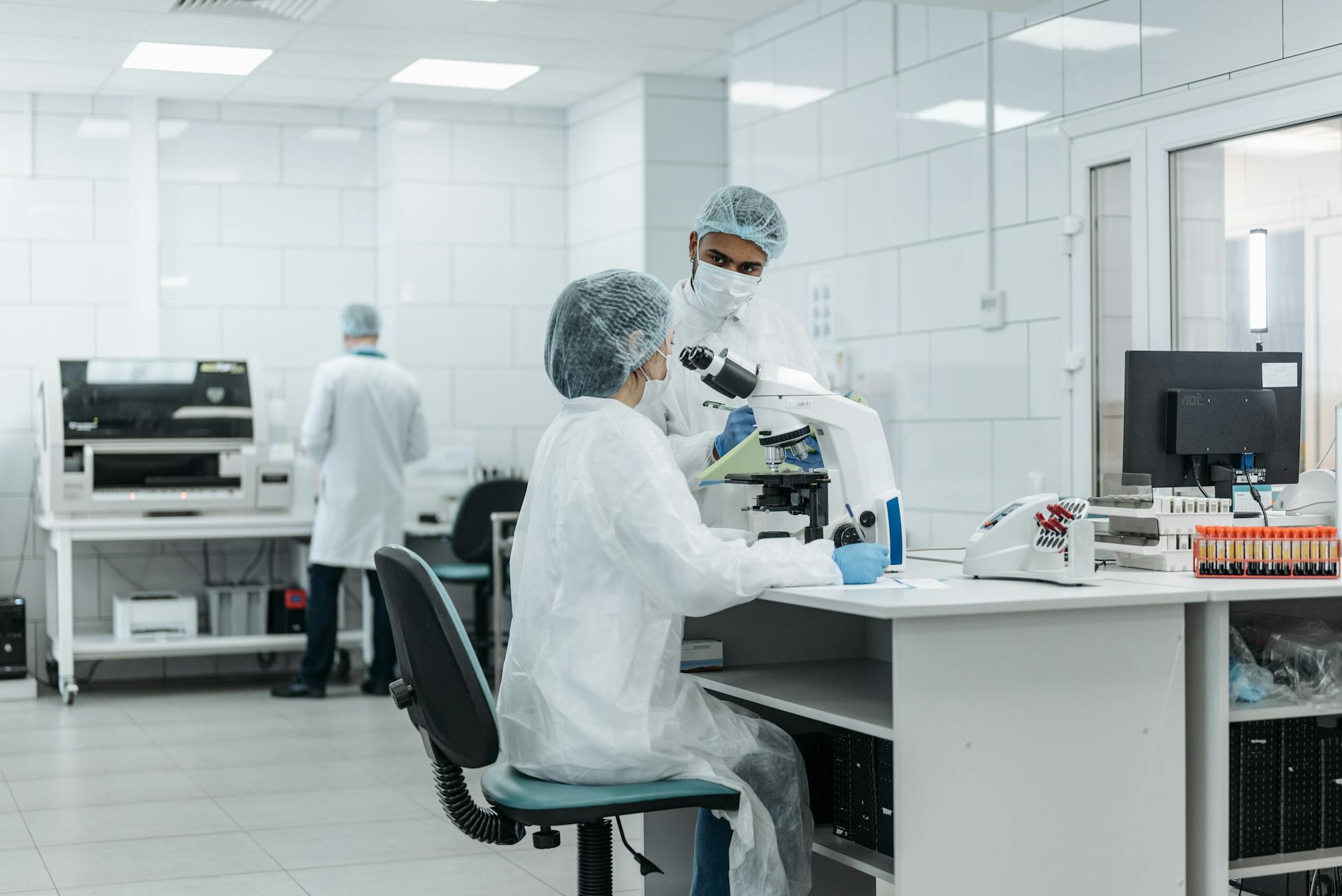Laboratory robotics explained (+ types of lab robots)

Share this article
Since computer controlled robotic arms began appearing in labs in the 1980s, the technology and progress of laboratory robotics has accelerated at an exciting pace, making it possible for labs to streamline the process of carrying out tasks that were once both resource and labour intensive.
What are laboratory robotics?
In short, laboratory robotics is the field of utilising both automated and traditional robotics technologies within laboratory settings. The aim of lab robotics is to free up scientists and lab workers for more complex and nuanced tasks that require human oversight, as well as greatly improving the throughput of labs. Robotics makes labs more productive, safer, and efficient.
Types of laboratory robots
Every lab has different needs, but the core types of robots that work within laboratories are broadly the same. Below, we touch on some robots that you might find within a lab and what their main applications are.
1) Liquid handling
Liquid handling robots deal with precision handling of liquid. Usually, they involve pipette attachments, and excel at transferring specific volumes of liquid from container to container. There are different types of robots for most lab scenario that involves liquid dosing and pipetting, with some common applications outlined below:
Applications:
- Drug discovery and delivery
- Sample preparation and experiments
- Serial dilution
- NGS
- PCR (polymerase chain reaction) assays
- ELISA (enzyme-linked immunosorbent) assays
2) Plate handling robots
Plate handling robots specialise in moving microplates around laboratory settings, which creates a more efficient workflow.
Applications:
- Microplate management
- Drug discovery
- Clinical diagnostics
- ELISA (enzyme-linked immunosorbent) assays
- Cell culture assays
3) Microplate readers
Microplate readers analyse the contents of microplates, a vital task within any life sciences lab for collecting data. Plate handling robots can help to automate the microplate reading process by loading and unloading plates. They are versatile machines, capable of analysing various chemical and biological samples.
Applications:
- Kinase assays
- High-throughput screening
- Protein quantifications
- Cell viability and proliferation assays
- ELISA (enzyme-linked immunosorbent) assays
4) Automated chemical synthesis robots
These robots efficiently automate the process of synthesising various compounds. They follow predefined protocols set by lab workers, and handle all the steps of the process including measuring, heating, mixing, and purifying reagents.
Applications:
- Drug discovery
- Material science
- Organic chemistry research
5) Biobanking robots
Biobanking robots automate processes within biobanks to ensure sample integrity is upheld and processes are run efficiently. Biobanks that these robots operate within store and handle large collections of biological materials, such as DNA, blood, and tissue samples.
Applications:
- Sample retrieval and transportation
- Aliquoting of samples
- Tracking samples
6) Robotic arms
Robotic arms are the workhorse of laboratories. They can be utilised and programmed for dozens of purposes depending on the attachments that they have. Some of their uses are outlined below.
Applications:
- Precise handling of liquids
- Sample transfer and sorting
- Cell culture automation
- Decapping/recapping
- Microplate handling
- Handling hazardous materials
Automated laboratory robotics
Many lab robots are automated, or if they aren’t, they are able to be automated. At Astech, we specialise in the ideation, design, and build of such robots for laboratory automation, including:
Robotic Lab Assistants
RLA’s (Robotic Lab Assistants) are a different approach to automation that assist with repetitive tasks, bridging the gap between automated and manual processes. These robots are manual so that they can transport themselves around the lab for a much more efficient way of working.
Explore Robotic Lab Assistant
Collaborative Robots
These are robots that can work in collaboration with human workers, either up close, or from a distance. There are infinite applications for cobot technology within the lab, and our team of inventors and engineers are experts at identifying how lab workflows can be improved with the use of human to robot collaboration.
Explore RAMP / Cobots
Lab Automation Software
Behind every automated lab, there is software ensuring everything runs smoothly. Software like our LabExpert® can command any SiLA 2 instrument, keeping workers updated on any and all actions taking place across the lab and allowing them to orchestrate their robots using one, user-friendly interface.
Explore LabExpert®


